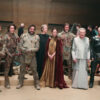For Dune fans, saying that a faithful (and successful) big-screen adaptation has been a long time coming is… an understatement. Next year marks the 60-year anniversary of Frank Herbert’s original novel, and 2024 marks 40 years since David Lynch’s troubled cult classic was released. Denis Villeneuve’s Dune: Part Two movie comes just two years and change off of Dune: Part One, which was widely well-received by critics and audiences alike, but it left them all with one spicy question: What next?
“This Is Only the Beginning”
Dune: Part Two picks up right where the previous movie left fans, off in the desert with Paul, Jessica, and the Fremen. Despite this direct continuation in narrative, it immediately strikes viewers as a stylistic departure from Part One and from the source material (in more ways than one) for book readers. Fortunately, Villeneuve manages to stay true to the core tenets of Herbert’s text, while expanding on several characters and trimming others. The result is the rare blockbuster event that is both cinematically exhilarating and intellectually engaging from beginning to end.
Paul and Chani’s Complex Love
Villeneuve has made it a point since the promotional tour of Part One to emphasize the importance of Chani, particularly as an effective co-lead in Part Two. What confused and even concerned some fans in 2021 becomes perfectly clear by the final shot of this film. This story’s beating heart is the love shared between Paul and Chani, as the former looks to find a foothold among the Fremen by which he can kill his way to the Golden Lion throne.
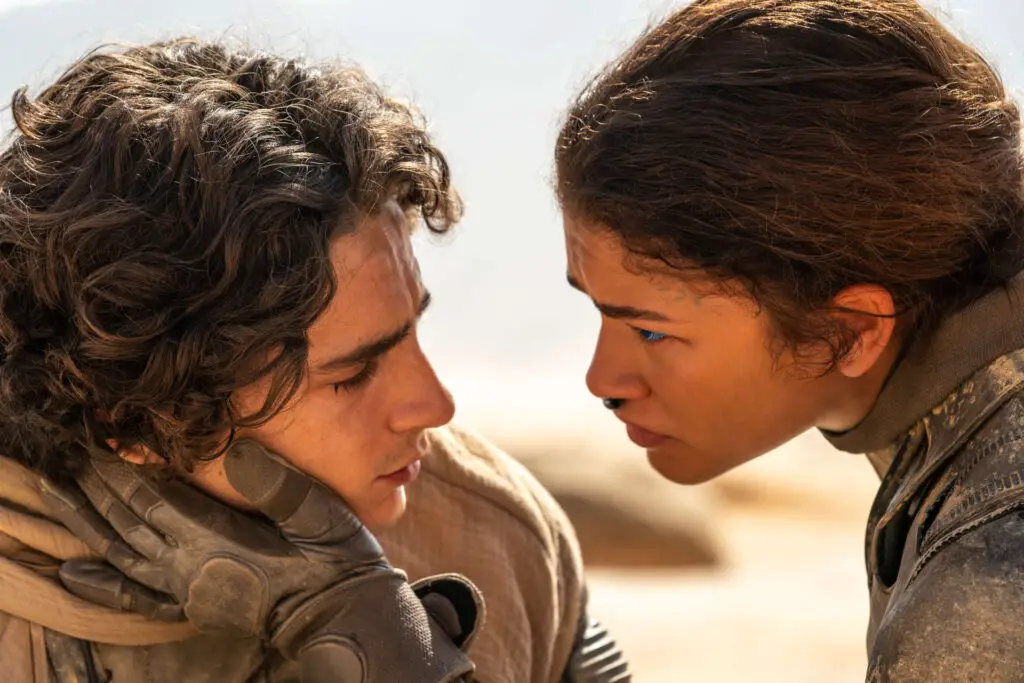
Chani does not acquiesce and fall for Paul from the beginning, rather she watches him from a distance, trying to gauge who he actually is and what he intends to do. Villeneuve could hardly be called the most romantic of filmmakers, but his coming-of-age style approach to this young love feels natural and works as a strong foundation for the rest of the story.
Zendaya finely balances the line between ardent non-believer and devoted partner when it comes to Chani’s relationship with Paul; it’s the best work she has done on the big screen yet. Timothèe Chalamet has even stronger screen presence in this entry and meshes well with Zendaya.
Ascendance and Opposition
Speaking of Chalamet, his turn as Paul here is far cry from the young man audiences met in Dune: Part One. In fact, he is barely Paul at all, instead going more often by Usul or Muad’Dib as he assimilates into Fremen culture. He quickly rises through their ranks and his embrace of the Lisan al-Gaib myth-making propels him into a messianic figure, which provokes a transformative and powerful performance from Chalamet.
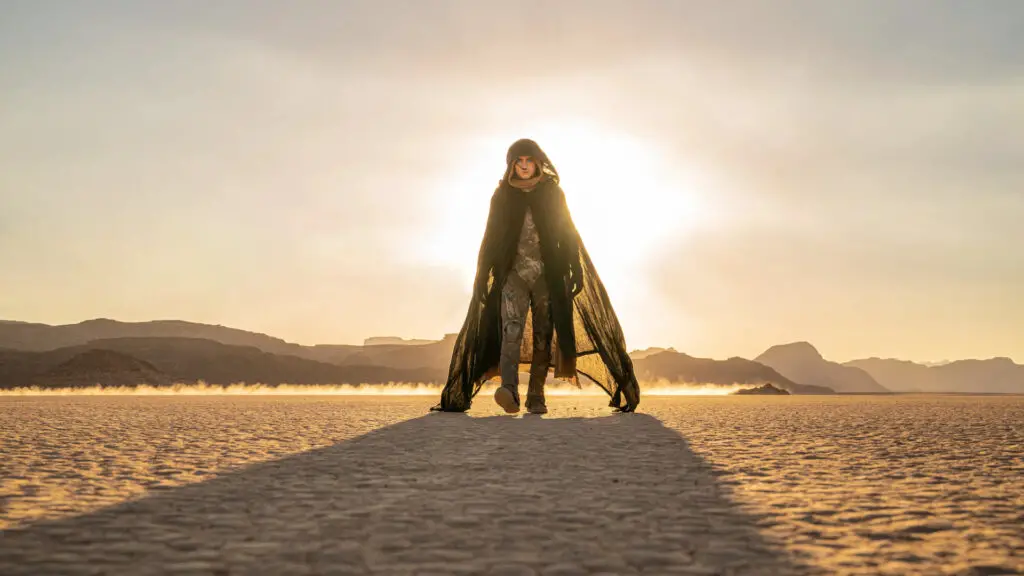
His internal struggle plays brilliantly across his features, ultimately giving way to the face of a full-blown military leader who inspires religious fanaticism. When you see the charisma and force with which he delivers a speech in the latter half of the film, you almost want to follow him into battle yourself.
This charisma and force is somehow matched by that of Austin Butler, who (like in the novel) plays the part of a dark mirror to Paul, playing things out in his corner of the galaxy and on a collision course with Muad’Dib. Butler approaches Feyd-Rautha with a completely unhinged demeanor, murdering for fun and committing other depraved acts. It’s a magnetic, live-wire performance that injects some needed “fun” into keeping up with the Harkonnens.
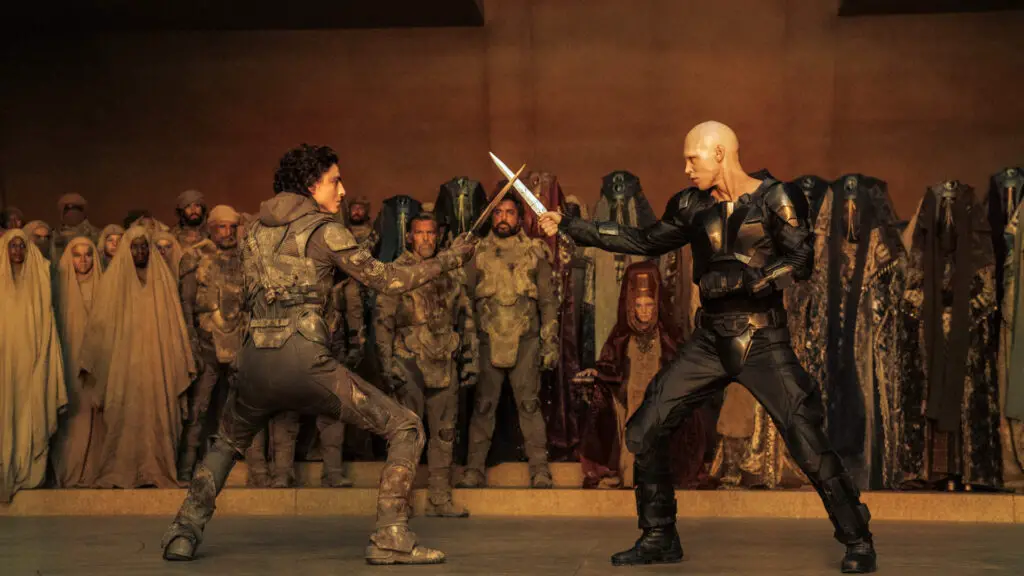
Bene Gesserit Manipulation
This Fremen embrace of Paul is sped along by Rebecca Ferguson as Lady Jessica, who is positively conniving and in mask-off Bene Gesserit mode. This transformation in demeanor is matched by the physical transformation she undergoes during the Water of Life sequence, which is handled with an appropriately freaky hand on Villeneuve’s part. Ferguson’s physicality is genuinely remarkable, twisting and contorting, and the internal transformation is done with what appear to be practical effects. It’s as strange and startling as you would hope the sequence to be.
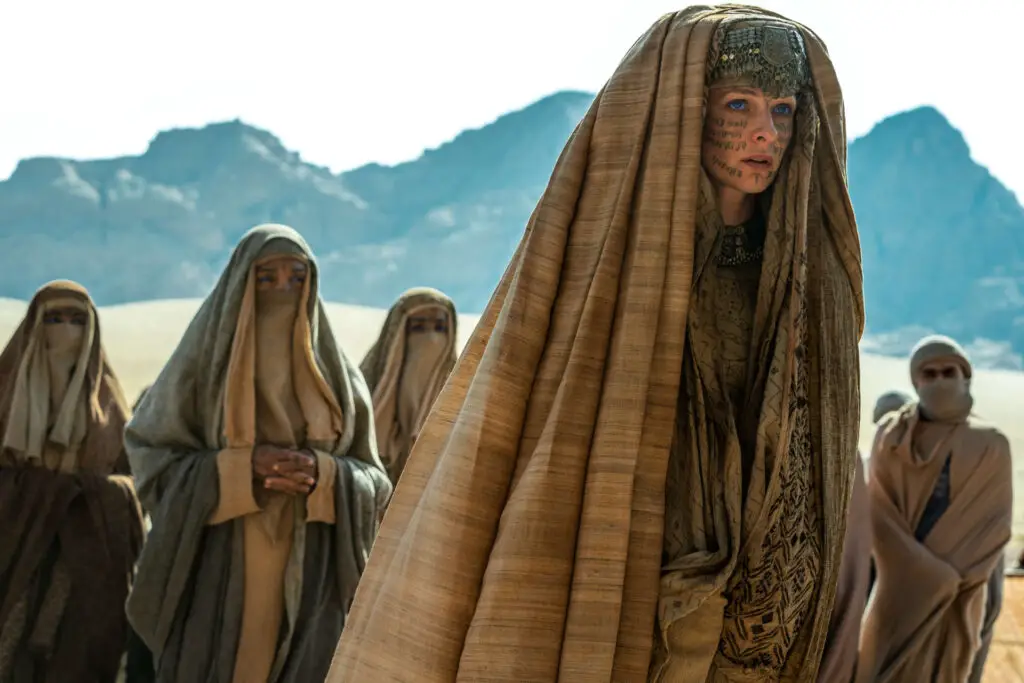
The malevolent nature of the Bene Gesserit order is out in the open for audiences to get a better understanding of, albeit they remain cloaked in secrecy in the world of the film. Even as the Imperium unravels, the Reverend Mother Gaius Helen Mohiam says it best: “We don’t hope. We plan.”
Plans Within Plans
Speaking of plans, the film is magnitudes more concerned with political machinations than its predecessor. Charlotte Rampling’s Mohiam offers counsel to Emperor Shaddam IV and Princess Irulan, Lady Margot Fenring takes a hands-on approach to learning more about Feyd-Rautha Harkonnen, and the best way to move forward with the Fremen is a constant friction point for Paul and Jessica… and another forceful, vocal Atreides.
Key Difference With the Novel
Book readers will be wondering how a modern adaptation could tackle Alia Atreides, Paul’s younger sister, and the answer is a loaded one. I think going into the film with all expectations at the door for the character is probably best policy. The route they choose is bold but conveys the spirit of the character well, without dedicating a large portion of the film to her.
Cinematic Spectacle
One point that virtually everyone will be able to agree on, however, is the utterly spectacular craft on display in Part Two. On the heels of Dune: Part One winning six Academy Awards, it would have been easy to rest on their laurels, but it seems as if every single department upped their game.

Greig Fraser’s cinematography is even more striking, dealing in colors and textures that were totally absent in the first film. Fraser and editor Joe Walker are also paramount in executing the film’s bigger, better action sequences, which are expertly designed and choreographed. The production and costume design are also out of this world, particularly with so much time dedicated to exploring the Fremen and fleshing out the Harkonnens on Giedi Prime.
Hans Zimmer’s Dune: Part Two soundtrack feels more reserved and focused, allowing for a wealth of quieter moments throughout the film and making the bombastic musical cues that much more impactful. It’s another strong accompaniment that expands on the great work he already did to build the music of this world with his first score, as well as The Dune Sketchbook. Suffice it to say, this is one of the most visually stunning and sonically pleasing films you will ever experience in theaters.
A Dark Finale
Despite telling roughly the final third of the novel, this movie clocks in at 10 minutes longer than Dune: Part One. Despite that, this initial viewing flew by. If anything, it almost feels like more screen-time could have been dedicated to some minor characters from the novel that get cut out here, or subplots that book readers will notice are missing.
From what is in the final film, any extra time dedicated to Paul’s rise to power or the epic final battle for Arrakis would have been a welcome addition, although it doesn’t necessarily feel like there is substantial material on the cutting room floor. In a world where Oppenheimer is a near billion-dollar hit, one wishes a three-hour Dune: Part Two were a reality. Audiences may also be taken aback by the grim and upsetting tone of the film’s conclusive moments.
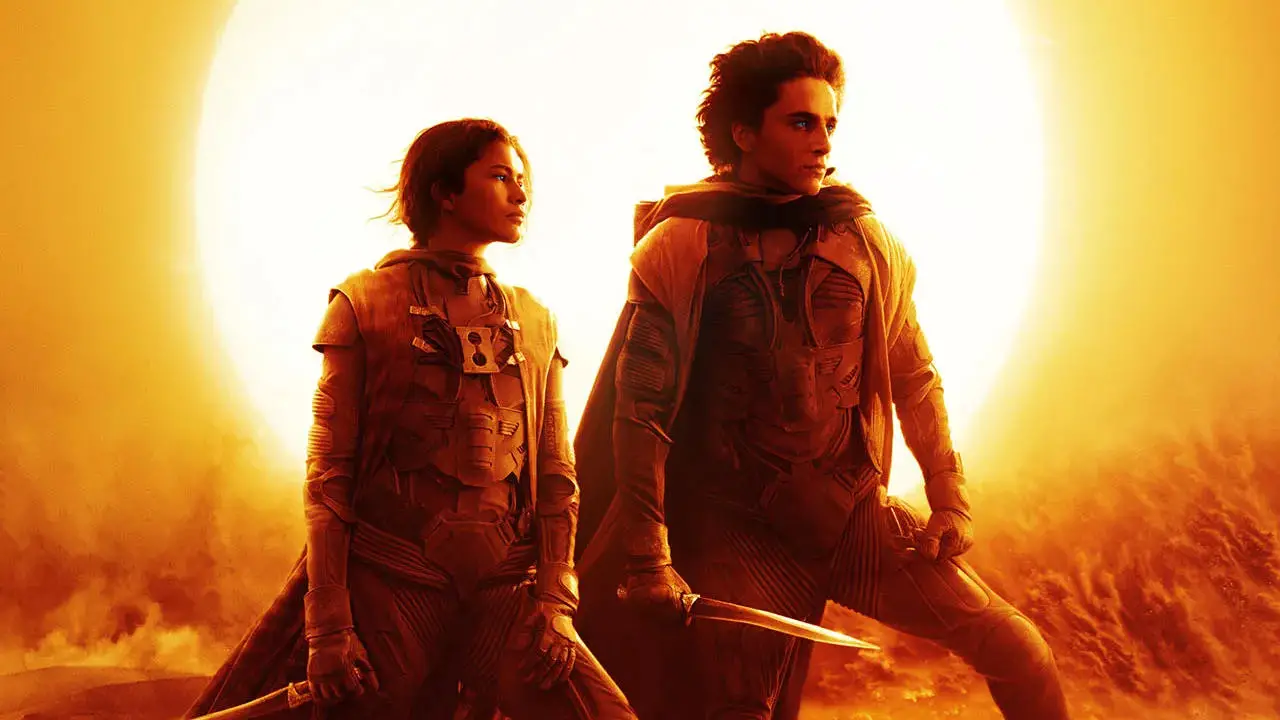
Thanks to Warner Bros. Pictures for providing Dune News Net team members with press screening invitations for Dune: Part Two.



